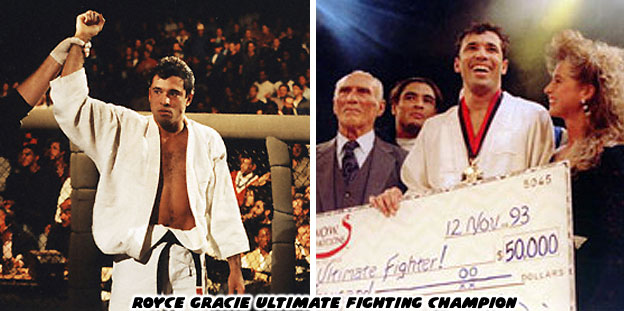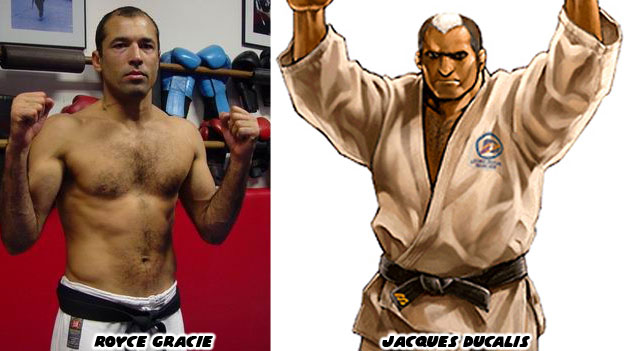
The take from the PPV was so great that the creators began to think that there might be a market for this type of show. The audience rose exponentially for the subsequent UFC fights. Royce Gracie won three of the first four battles. He could not finish the 3rd UFC fight because he was too exhausted after battling Kimo Leopoldo. Otherwise he demonstrated the superiority of Brazilian Ju-Jitsu when compared to all the other fight forms and fighters. He went through his opponents in rapid succession with most fights lasting less than a minute. The BJJ system was insanely efficient and he got to demonstrate it again and again to the millions of people watching on television. It did not matter if he was fighting men bigger or stronger than he was, just like his father he made the most out of technique rather than brute force.
Even nonbelievers were converted as they watched Royce dispatch with fighters from different backgrounds year after year. The Gracie schools took off in popularity and expanded all over North America and the world. Before too long the UFC-style of fighting had become part of the mainstream consciousness. It was apparent when Ren and Stimpy creator John Kricfalusi used the staple "ground and pound" system in a battle between Yogi Bear and Ranger Smith in the animated short "Boo Boo Runs Wild."
Students of the BJJ school, and not solely Gracie family members began winning tournaments the world over. By the end of the '90s and the start of the new millennia the system had garnered a tremendous reputation. Fighters in the UFC, Pride, and other promotions were beginning to favor BJJ practitioners. The promotions themselves wanted to make sure that they kept themselves closely aligned with the Gracies so that the name could help guarantee viewers. Whenever a Gracie battled they wanted certain stipulations on the matches so that any advantages might be evened out for a competitor. The larger promotions did not want to risk losing the biggest names in the game so they conceded to most of their demands.
In true heroic tradition a caricature of Royce would be adapted for fighting games. This time the country bypassed the manga and animé series and went right to video games. SNK was fairly certain that by now the entire world was familiar with the legend of Royce and the contribution of Ju-jitsu to the fight universe. To prevent any similarities with persons living or dead the studio changed up some details for their character in the game Buriki-One. The Judo expert Jacques Ducalis was French and not Brazilian for one, but he also had a birthmark which discolored his hair, it was just enough to keep the Gracie family out of court but also appease gamers that followed real-world fighters.

However Jacques was not the poster boy for Buriki-One. Nor was "Mr. Karate II" Ryo Sakazaki the star. Ryo had made his debut in the Art of Fighting and was considered a Yoshiji Soeno-type character. His father Takuma Sakazaki was the original Mr. Karate and modeled after Mas Oyama. In less than a decade since Street Fighter II and the Art of Fighting had been released both karate and even jujitsu had fallen out of favor. The world (or at the very least the Japanese) had embraced a new fighting hero. The star of Buriki-One was a flashy Japanese striker named Tendo Gai, the person he was based on had accomplished a tremendous amount in a short span of time. The next blog will look at "the Gracie Hunter" Kasushi Sakuraba. As always if you enjoyed this blog and would like to sponsor me please visit my Patreon page and consider donating each month, even as little as $1 would help make better blogs and even podcasts!

No comments:
Post a Comment